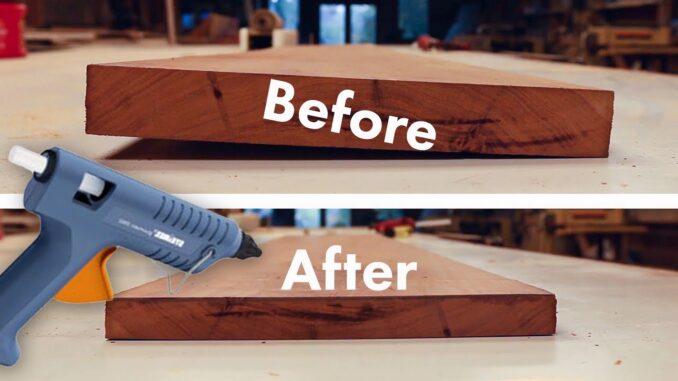
Wooden furniture and DIY projects are a staple in many homes, providing character and style. However, a common problem woodworkers face is warped wood. Warping can occur in wooden furniture, flooring, and various other wooden items, especially when environmental factors like humidity and temperature fluctuate. Fortunately, knowing how to unwarp wood can save your precious wooden pieces, giving them new life.
This article will walk you through understanding why wood warps, how to assess the damage, and the best methods to restore your wood to its original shape. By the end, you’ll be equipped with practical solutions to tackle warped wood effectively.
Why Does Wood Warp and How Can You Fix It?
Wood is a natural material, and like many organic substances, it reacts to changes in its environment. When wood absorbs or loses moisture unevenly, it can cause the material to expand or contract. This imbalance leads to warping. High levels of moisture can cause the wood to swell, while dry conditions can lead it to shrink. Temperature and humidity also play a major role in how wood behaves over time.
For example, if a piece of wood is exposed to moisture on one side but stays dry on the other, the wetter side will expand while the dry side contracts. This imbalance creates warping, such as cupping or bowing. The good news is that learning how to unwarp wood is entirely possible with the right approach.
Wood warping is common for furniture, flooring, and DIY projects. It’s a problem that doesn’t have to mean the end for your wood. With the right techniques, you can restore warped wood back to its original shape, saving time, money, and resources.
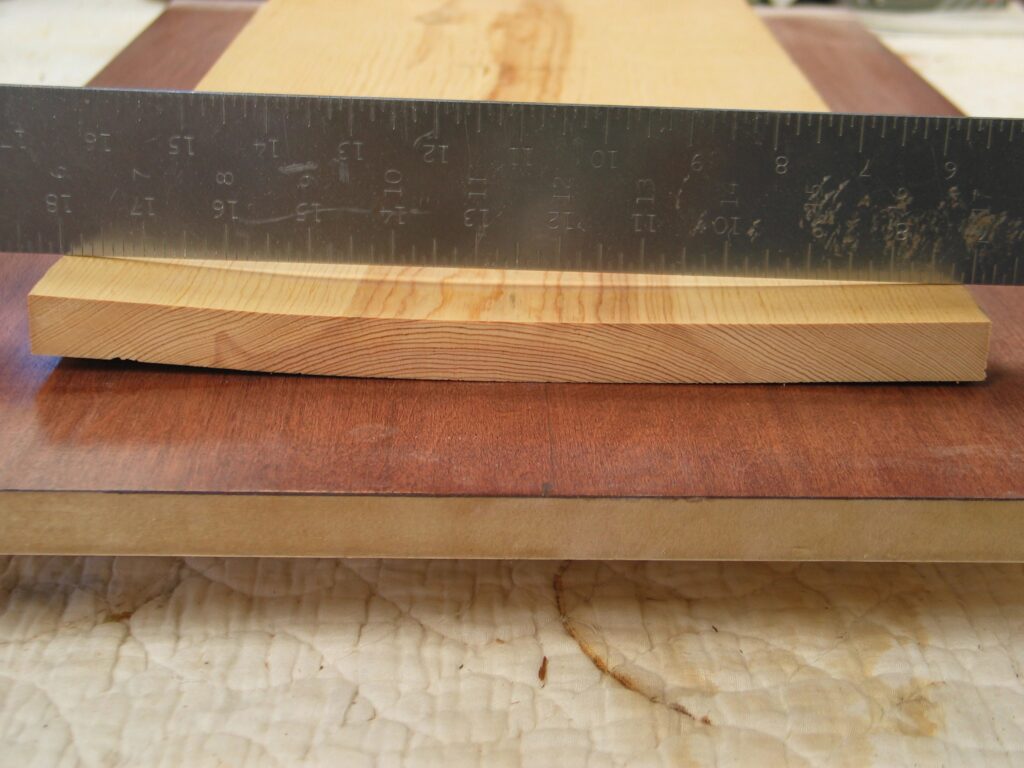
Types of Warped Wood and Their Causes
When learning how to unwarp wood, it’s important to know the different types of warping, as each requires a different method of correction. The most common types are cupping, bowing, and twisting. Let’s break these down in more detail:
Cupping
Cupping happens when the edges of the wood rise and the center sinks. It creates a concave shape, like a bowl. This often happens when one side of the wood absorbs more moisture than the other, leading to uneven expansion.
In most cases, cupping occurs when the wood is exposed to moisture in an environment with fluctuating humidity. For instance, if you leave wood outside during the rainy season or place it near a window where it gets a lot of sunlight, it may absorb moisture unevenly and warp.
Bowing
Bowing occurs when the wood curves along its length, forming a convex shape. This can happen when the wood dries unevenly or is exposed to heat or humidity changes.
Bowing typically happens in planks that haven’t been properly stored or treated. If you notice that your wood curves in a long arch, you’re dealing with a bow. Fortunately, this type of warp can be fixed by using techniques that apply moisture or heat.
Twisting
Twisting occurs when the wood warps in a spiral shape, making it look like it’s been twisted along its length. This type of warp is harder to fix, as it results from uneven drying or improper storage. It can sometimes be a result of the natural grain of the wood, but it’s often exacerbated by environmental factors. If your wood has twisted, you’ll need to apply more advanced techniques to fix it.
Knowing how to unwarp wood requires identifying the specific type of warp you’re dealing with. Once you’ve pinpointed the problem, you can apply the appropriate method for restoration.
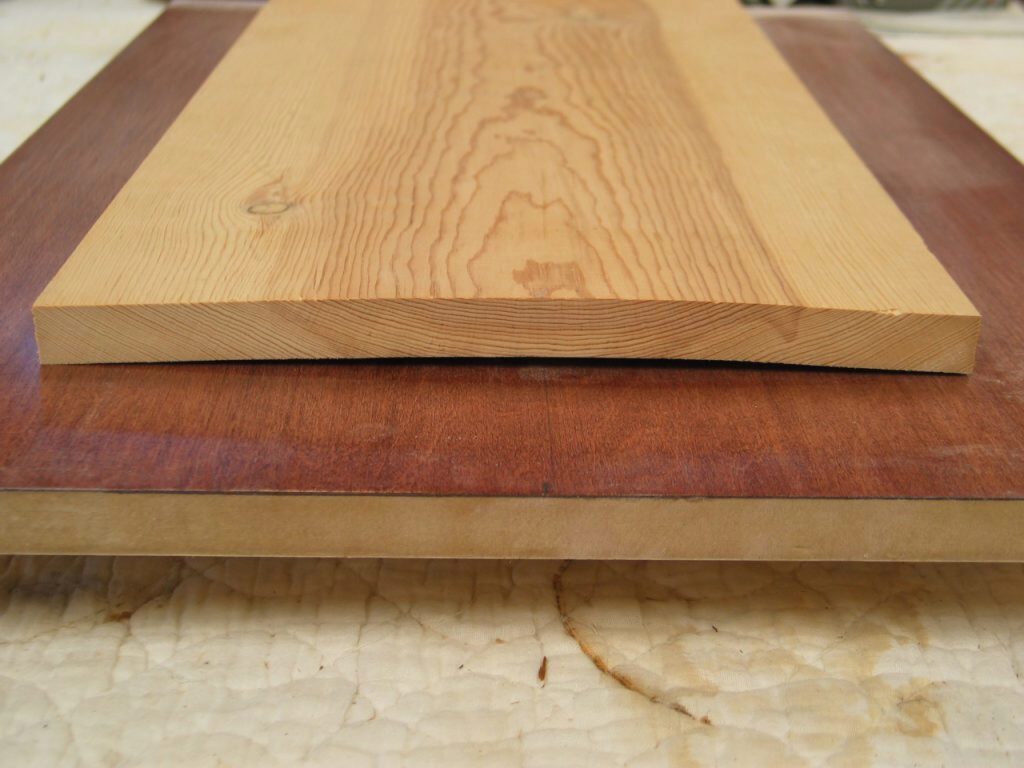
How to Unwarp Wood: Start with a Simple Inspection
Before jumping into any techniques for how to unwarp wood, it’s important to inspect the damage closely. This initial assessment will help you understand the severity of the warp and determine the best approach for restoring the wood.
Key Steps for Inspection:
- Examine the Direction of the Warp: Look at the wood from various angles. This will help you see if the warp is uniform or concentrated in certain spots.
- Check for Severity: Measure how much the wood is warped. Is the center of the wood raised or sunk? Is the warp subtle or dramatic?
- Identify the Type of Warp: Determine if the wood is cupped, bowed, or twisted. This will tell you which method will work best for restoring it.
Tools You’ll Need:
- A measuring tape to check the degree of the warp.
- A level to measure the flatness of the surface.
- A straightedge to see the extent of any bowing or twisting.
Once you’ve inspected the wood and understand the type and severity of the warp, you can move forward with the best method for how to unwarp wood.
The Power of Moisture: Using Water to Reverse Wood Warping
One of the most effective ways to unwarp wood is by introducing moisture. When wood absorbs water, it becomes more pliable, allowing you to reshape it. The key is to apply moisture carefully—too much water can cause further damage.
How to Apply Moisture:
- Mist the Wood: Use a fine spray bottle to lightly mist the surface of the wood. Avoid soaking it completely, as this can cause the wood to swell unevenly.
- Use a Damp Cloth: If you don’t have a spray bottle, you can dampen a cloth and gently rub it across the surface. Be sure the cloth is not overly wet.
Once the wood has absorbed some moisture, let it sit for a few hours. The fibers will become more flexible, which will help in reshaping. After the moisture has penetrated the wood, you can proceed with other methods, such as applying pressure or heat, to restore the original shape.
Important Note: Always allow the wood to dry thoroughly once the warp is corrected. If it stays damp too long, it can absorb more moisture and warp again.
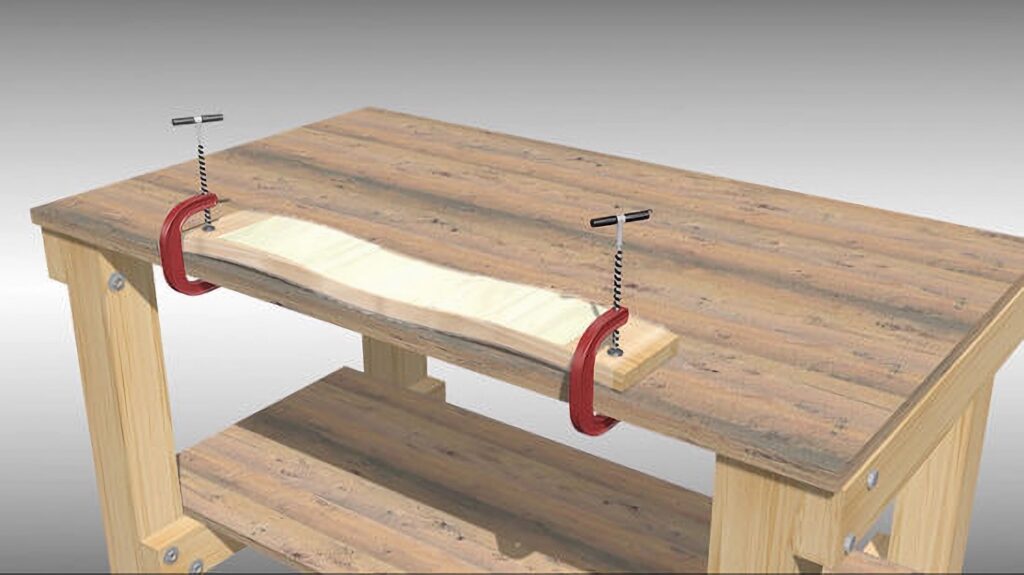
Heat and Steam: Applying the Right Amount of Heat to Restore Shape
Using heat is another effective way to unwarp wood. Heat works by softening the wood fibers, making them more pliable. Steam is especially helpful because it gently adds moisture while also providing heat.
How to Apply Heat:
- Steam Iron Method: Hold a steam iron a few inches above the warped wood. Allow the steam to penetrate the wood for several seconds. This helps relax the fibers, making them more flexible.
- Heat Gun: A heat gun can also be used to carefully warm up the surface of the wood. Make sure to keep the heat gun moving so you don’t scorch the wood.
After applying heat, the wood will be softer and easier to reshape. At this point, you can use clamps or pressure to push the wood back into its original form.
Why Heat Works:
Heat, combined with moisture, softens the lignin (the binding agent in wood). This makes it easier to bend or straighten without breaking. When you allow the wood to cool and dry, it will retain the new shape you’ve applied.
You might be interested in this article: How to Remove Wood Glue
Clamping the Wood: The Key to Holding the Shape
Clamping is a critical step in how to unwarp wood. After applying moisture or heat, you need to hold the wood in place while it dries and cools. Clamps help keep the wood flat and prevent it from returning to its warped state.
How to Use Clamps:
- Place the Clamps Evenly: Space the clamps evenly across the warped area to distribute pressure evenly.
- Apply Pressure Gradually: Tighten the clamps slowly and evenly to avoid damaging the wood. It’s better to apply light, consistent pressure than to over-tighten.
- Leave the Wood to Dry: Let the wood sit clamped for several hours, or overnight, to ensure it retains its new shape.
Clamping is essential to the success of how to unwarp wood. Without this step, the wood could return to its original warped form once it dries.
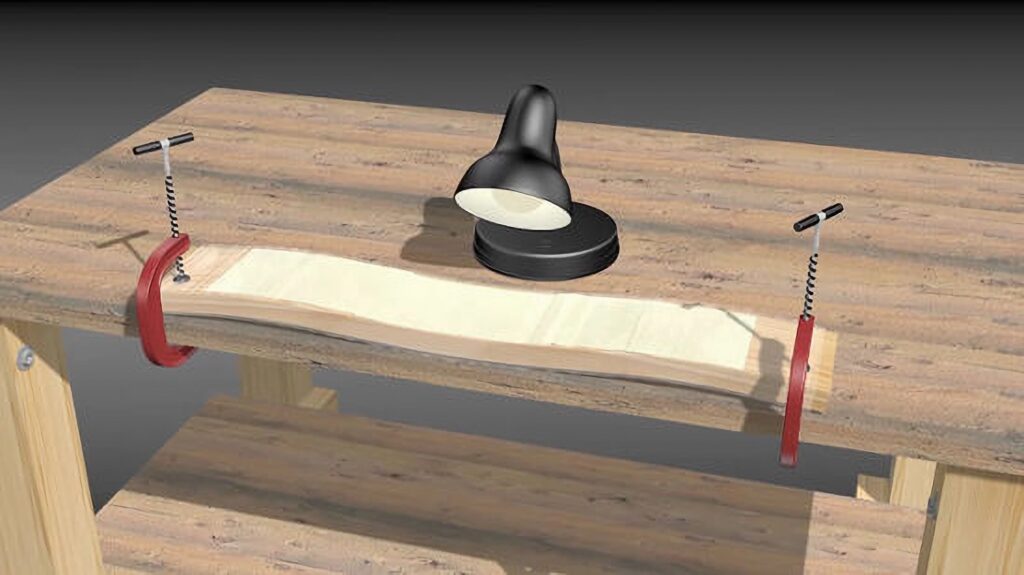
Using Weight and Time: Simple Techniques for Fixing Mild Warps
For less severe warps, you can use the simple technique of applying weight to push the wood back into shape. This method takes longer but can be very effective.
How to Use Weight:
- Place Heavy Objects on the Wood: Set a heavy object like a stack of books or a large stone on the warped area.
- Let It Sit: Allow the weight to sit on the wood for several days. Over time, the pressure will gradually push the wood back into its original shape.
This method works well for how to unwarp wood with minor cupping or bowing. It’s a simple, low-cost option, but it requires patience.
Sanding: Smoothing Out Small Imperfections
After you’ve unwarped the wood, you may notice some rough patches or uneven areas. Sanding helps smooth out these imperfections and restores the wood to its flatness.
How to Sand Wood After Unwarping:
- Choose the Right Sandpaper: Start with medium-grit sandpaper and move to finer grits for a smoother finish.
- Sand with the Grain: Always sand along the wood grain to avoid creating scratches.
- Be Patient: Sanding takes time. Apply even pressure and make sure to remove any bumps or dips left after the warping.
Sanding is an important final step in how to unwarp wood to achieve a smooth, even surface.
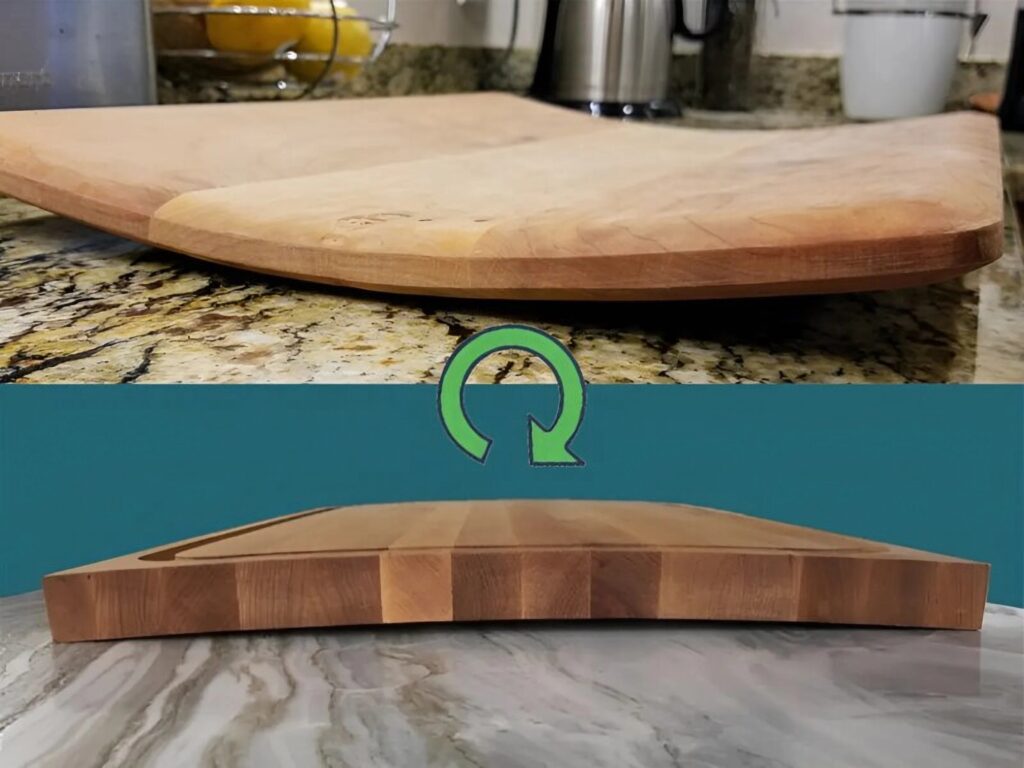
When to Seek Professional Help
While most warps can be fixed with DIY methods, there are times when the warp is too severe to correct on your own. If the wood is deeply twisted or has sustained major damage, it may be time to consult a professional.
A skilled woodworker can evaluate the damage and offer advanced techniques, such as kiln-drying, or even recommend replacing the wood if necessary.
You might be interested in this article: Finishing Plywood Edges
Preventing Future Warping: Tips for Maintaining Your Wood’s Shape
Once you’ve learned how to unwarp wood, it’s important to take steps to prevent future warping. Proper maintenance and storage can keep your wood in great condition for years to come.
Tips for Prevention:
- Control Humidity: Use a dehumidifier in damp areas and store wood in stable, dry environments.
- Proper Storage: Avoid placing wood near heating vents or in areas where humidity fluctuates.
- Use Protective Finishes: Applying a finish or sealant helps protect the wood from moisture and maintains its stability.
By following these tips, you’ll help prevent wood from warping again in the future.
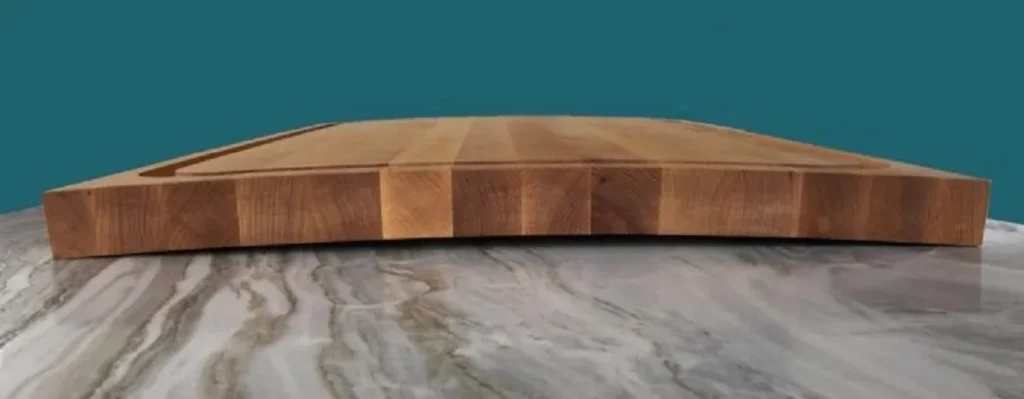
How to Unwarp Wood: A Quick Reference Guide
Here’s a quick overview of the essential techniques for how to unwarp wood, summarized in a table for easy reference:
| Technique | Best For | Description |
|---|---|---|
| Moisture Application | Cupping, Mild Warps | Lightly dampen the wood to relax fibers and return to shape. |
| Heat and Steam | Bowing, Twisting | Apply steam or controlled heat to soften wood for reshaping. |
| Clamping | All Types of Warps | Hold wood in place with clamps while it dries and cools. |
| Weight and Time | Mild Bowing and Cupping | Use heavy objects to slowly correct mild warps. |
| Sanding | Post-Unwarping | Smooth out imperfections after the wood is restored to shape. |
Final Thoughts on How to Unwarp Wood
Restoring warped wood is a skill every woodworker and DIY enthusiast can benefit from. Whether you’re dealing with cupping, bowing, or twisting, understanding the causes of wood warping and how to unwarp wood effectively will help you bring your furniture or projects back to life. From simple methods like applying moisture and heat to using clamps or weight, there are plenty of practical techniques to tackle wood warping at home.
By inspecting the damage, applying the right methods, and giving your wood the proper care, it’s possible to restore it to its original shape and extend its lifespan. And if all else fails, professional help is always an option for more severe cases. Prevention is equally important, so taking steps to control humidity, store wood properly, and apply protective finishes can help ensure that your wood stays in great condition for years to come.
With the knowledge of how to unwarp wood, you’ll be able to handle most wood-related challenges with confidence and ease.